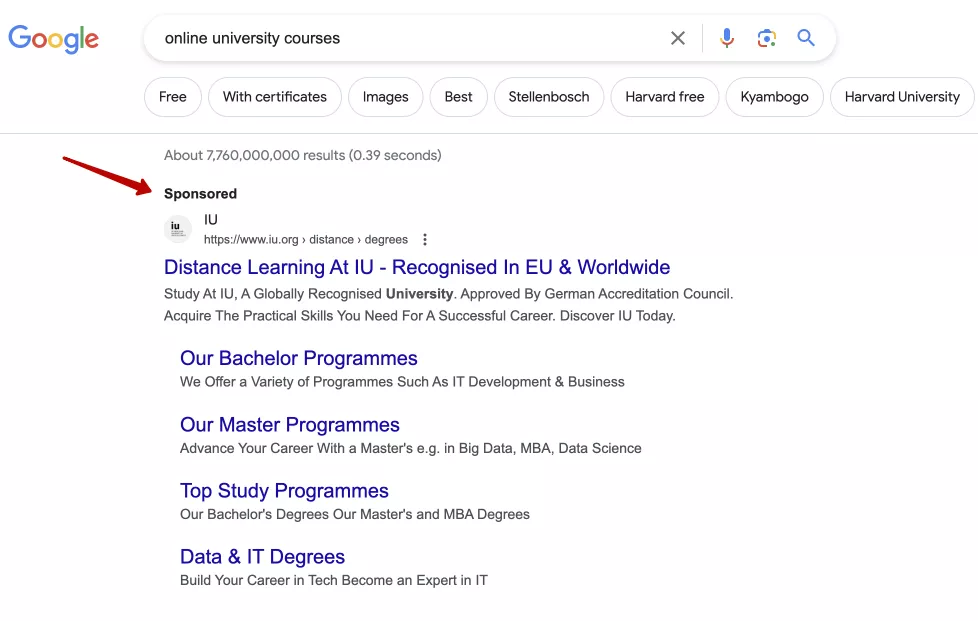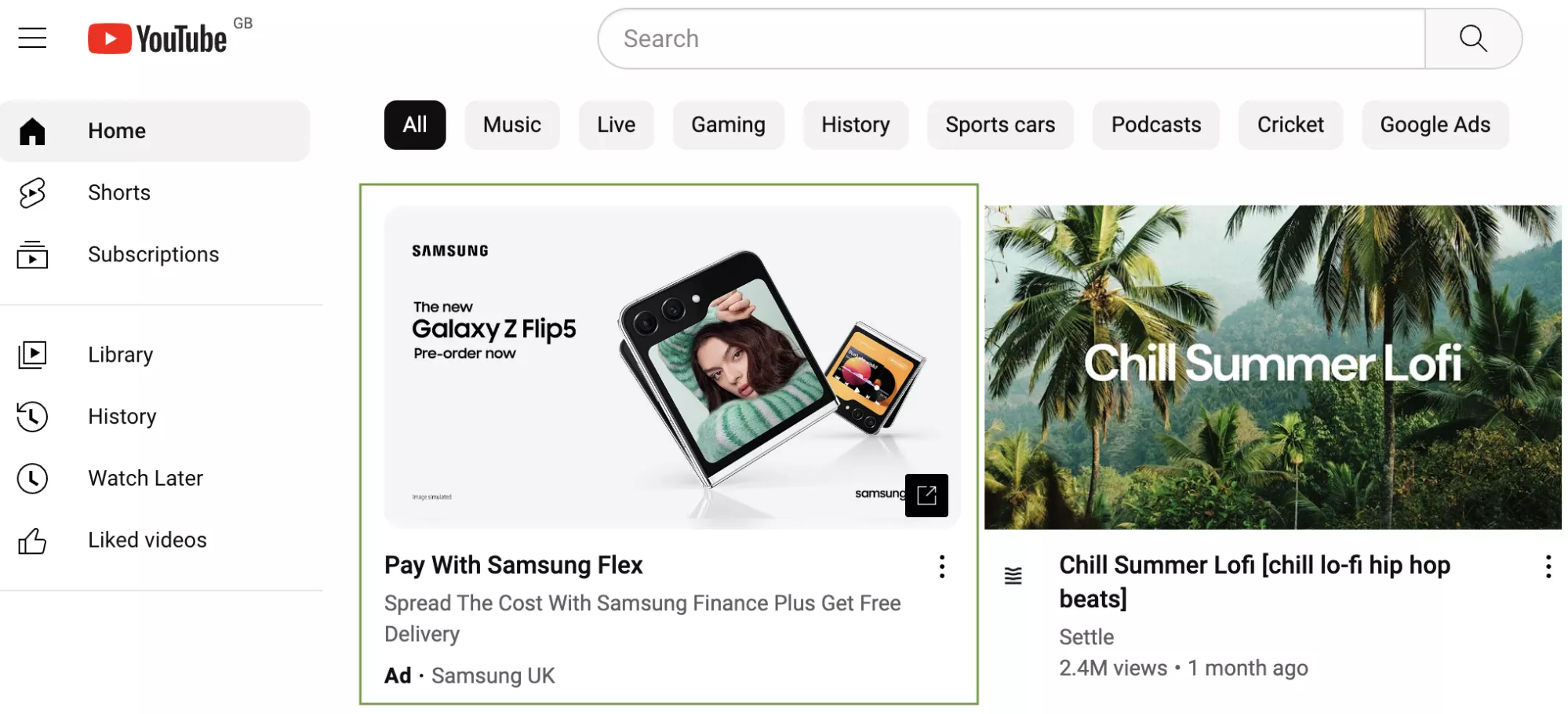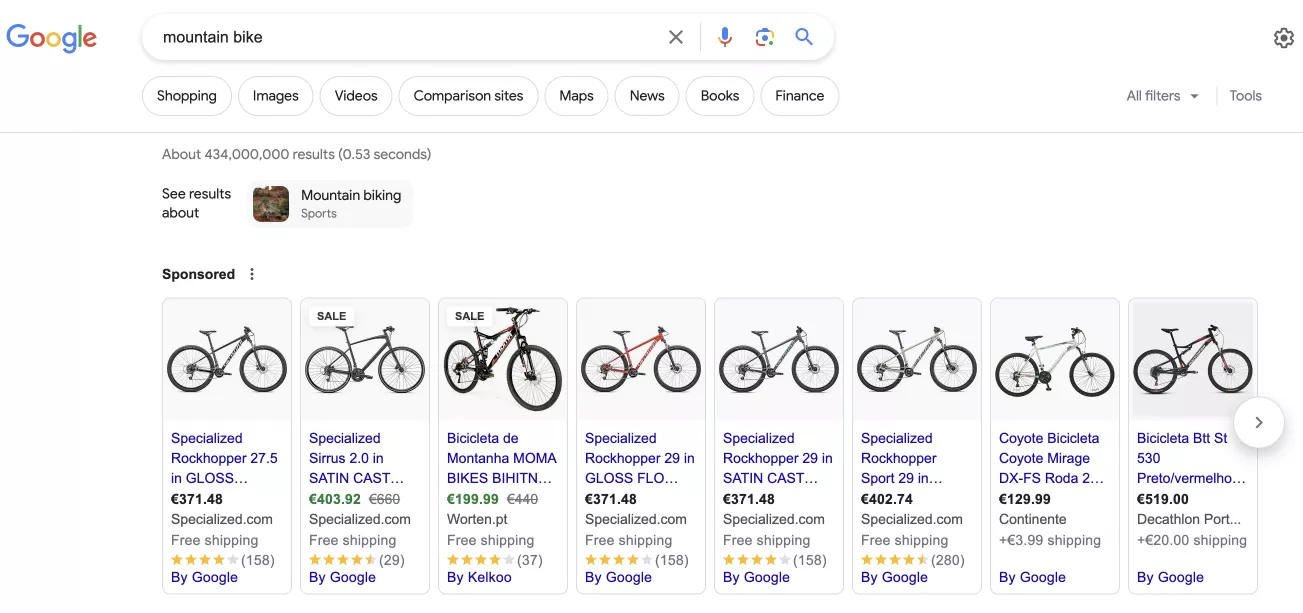How Does Google Ads Work? A Guide for Beginners in Online Advertising
To successfully promote your business online, it is essential to have effective tools. Google Ads is one such tool. This service allows advertisers to place ads that reach their desired target audience, attract new customers, and grow their business. But how does Google Ads do this?
What is Google Ads?
Google Ads is an advertising service that allows you to publish ads for various products and services in Google's search results, on its partner sites, in mobile apps, and so on. According to Gitnux, Google Ads is one of the most popular and powerful tools in the marketing world: about 246 million businesses use it, and billions of users see its ads every month.
Types of advertising campaigns in Google Ads
Google Ads offers a huge range of advertising campaigns; there are over 20 different types of campaigns at the time of writing. In this article, I will discuss five of the most recognizable and effective ones.
1. Search campaigns
Search campaigns are one of the most utilized ad campaigns in Google Ads. This type of ad is shown in Google search results when users actively search for products or services using specific keywords or phrases. The advertiser chooses the keywords at the campaign creation stage.
This type of campaign will reach a relevant audience quickly and efficiently based on search queries.
Examples of campaigns on the search network
2. Display campaigns
Display campaigns are a type of advertising campaign that allows you to publish ads outside of Google search results, such as on partner websites and mobile apps. With the help of banners, text ads, and other various ad formats, media campaigns attract the attention of potential customers when they visit or use other websites or apps.
This type of campaign helps improve brand visibility and should be placed on websites visited by or relevant to the target audience.
Examples of media network campaigns
3. Video campaigns
Video campaigns involve the placement of ads on various platforms, including YouTube, partner websites, and mobile apps. With the growing popularity of TikTok, video is becoming an increasingly common ad format because it instantly and effectively captures the attention of internet users and allows for more interactive engagement with the brand.
Google Ads allows you to choose when and where to show your ads. You can also choose the strategy that will be used to determine the audience: keywords, interests, demographics, etc.
Examples of video campaigns
4. Shopping campaigns
Shopping campaigns promote specific products or catalogs in Google search results, Google Shopping, and other partner websites. Businesses use them with a detailed product catalog, i.e., online stores, retail stores, and product aggregators.
The ads show a photo of the product, its name, and its price. They are seen by users who are comparing prices or looking for specific products.
Examples of product campaigns
5. App campaigns
App campaigns promote mobile apps through Google resources, including Google Search, Google Search recommendations, Google Play, Google Media Network, and YouTube. This type of campaign allows you to reach a wide audience of mobile users and increase the number of downloads.
Different ad formats, such as text ads, banners, and videos, are used for this type of campaign. App campaigns also utilize user interests, behavioral data, and demographics to show ads according to the target audience.
Examples of app campaigns
How does Google Ads work?
Now that I’ve covered the different campaign types let’s take a look at how they work. Campaigns are managed from an ad account, which can be created using a regular Google account. There are several things advertisers can do through an ad account:
- create ads;
- customize budgets and bids;
- view detailed analytics and reports on published ads;
- optimize campaigns to improve performance.
However, before you start customizing, you need to understand the basic principles of Google Ads: auctions, bids, audience targeting, keywords, and ad quality ratings.
Auctions
Google determines and allocates ad space to advertisers who want to show ads to the same audience or for the same keywords. The entire process happens in the following sequence:
- A user makes a search query or opens a web page with an ad.
- Google Ads instantly selects ads with keywords that match the user's search query.
- The system removes unsuitable ads from the resulting list of ads, such as those targeted at another country and rejected for violating the rules.
- The remaining ads are ranked by quality rating.
- The ad with the highest performance among its competitors is shown in the most prominent place or the first position.
This process happens in a fraction of a second every time a user makes a search query or opens a web page.
Quality Score
Google Ads uses the Quality Score measure to determine how effective the ad and landing page are for users on a scale of 1 to 10. It also determines the likelihood of an ad being shown and its ranking on a page relative to other ads.
The ranking includes factors such as:
- rate;
- the quality of the landing page and ads;
- competition with other advertisers in the auction;
- minimum ad ranking (meeting Google's requirements);
- the user's search context, namely their query, location, and device type;
- additional parameters, such as a phone number in the ad or links to other pages on the advertiser's site.
A high-quality rating positively impacts the auction process and helps get the ad into the first position among competitors.
Bids in Google Ads
A bid is the price an advertiser will pay for each click, action, etc., regarding ads shown on Google platforms.
There are several types of bids on Google Ads, and each has a different purpose. In most cases, advertisers use the Pay-Per-Click (PPC) model, where the client pays for actual clicks on the ad; this model measures the performance of the ads more accurately.
Bid Types
In general, five types of bids are used to achieve different goals.
|
Bid Type |
Description |
Goal |
|
Cost-Per-Click/CPC |
Payment is made for each click on an ad. |
Increase traffic to the website. |
|
Cost-Per-Thousand Impressions/CPM |
Payment is made for every thousand impressions of an ad. |
Increase ad visibility and brand recognition. |
|
Cost-Per-Action/CPA |
Payment is made for each targeted action performed. |
Increase conversions. |
|
Cost-Per-View/CPV |
Payment is made for each view of an advertiser's video ad. |
Increase the number of video ad views. |
|
Return-On-Ad-Spend/ROAS |
The advertiser can determine the desired level of profits based on the amount spent on advertising. |
Increase the return-on-ad-spend. |
Bid assignment strategies
You can assign bids in Google Ads using two strategies:
- Manual bids: The advertiser independently sets the price they are willing to pay for a specific action on each keyword, ad, or ad group (e.g., click, view, etc.).
- Automatic bids: Google independently sets the price based on various factors (e.g., quality rating, competition, etc.) and based on its own algorithms for setting automatic bids.
The choice of bid assignment strategy depends on the advertiser’s needs, resources, goals, and experience. To get started, advertisers can choose an automatic bid, observe the results, and adjust as needed. Choose manual bidding if you have experience, a clear strategy, and specific goals for your ad campaigns.
Audience targeting
Google Ads allows you to define and customize in detail who to show your ads to and when. By setting up clear targeting for your target audience, you will ensure your campaigns are more effective. Targeting can be of different types:
1. Audience targeting. This allows you to reach users based on their specific interests or behavior patterns. It is divided into two types:
- “interest audiences” to reach potential customers;
- “interested customers” to reach users who are looking for the products the advertiser offers.
2. Email lists. This type of targeting involves sending advertising messages based on lists of customers' email addresses, which the advertiser collects through a mailing list or website registration form.
3. Demographic targeting. Select target audience characteristics such as gender, age, etc.
4. Remarketing. Aimed at users who have already interacted with the advertiser's brand, remarketing is used to maintain interest or encourage further action.
Keywords
An essential step in any advertising campaign is the careful selection of keywords and key phrases. Keywords are the words or phrases for which ads will be shown to users on Google. They should be relevant to the products you are advertising. For example, if you sell women's clothing, keywords can be "women's clothing," "women's fashion," etc.
Google Ads also offers different types of keyword matches. Choosing a specific type affects how accurately your ads will be shown for a particular search query.
|
Match Type |
Description |
Examples |
|
Broad |
The keyword matches any words in the query in any order. |
Keyword: “flowers”. Queries: buy flowers, flowers for mom, etc. |
|
Phrase |
The keyword matches the specified order of words if there is a phrase in the query. |
Keyword: “flowers to mom.” Queries: flowers to mom delivery, flowers to mom inexpensive, etc. |
|
Exact |
The keyword matches the phrase in the query precisely without any changes. |
Keyword: “flowers to mom.” Queries: flowers to mom. |
Also, remember to use negative keywords so that the ads do not appear for certain search queries. For example, if you sell women's clothing in the luxury segment, you should exclude phrases containing the words "cheap" and "used."
Advantages of Google Ads
- Wide audience reach. Undoubtedly, Google is the most widely used search engine in the world. This can only mean one thing: your ads are very likely to be shown to millions of users from all corners of the world, and you will reach more users from your target audience.
- Geotargeting. Google's advertising campaigns can pinpoint the geographical location of potential customers. The feature of selecting a specific city, region, or country will help a business quickly establish a presence in the local market or find potential customers for a specific location.
- Different types of ads. Google Ads offers a huge selection of campaigns, where every advertiser can find something to suit their goals and products or services.
- Pay for results. Google works on a Pay-Per-Click (PPC) model, i.e., pay per result, which helps to manage costs and determine the effectiveness of specific campaigns. With different types of bids, settings, and strategies, advertisers can choose a specific target for their ads and be sure to get the results they want.
How to measure ad performance on Google Ads?
Metrics for evaluating results can be categorized into three types:
- finite;
- indirect or intermediate;
- qualitative.
Please note that some of the metrics need to be calculated independently. There is also a great "Custom column" or "Modify columns" feature in Google Ads that allows you to create your own personalized metrics if they are not available on the platform itself.
How to find the "Modify columns" feature
The final metrics include:
- CPA (cost/conversions) and ROAS (profit/expense) – cost per targeted action and return on ad spend.
- CPI (cost/number of app installs) – cost per mobile app install.
Indirect/intermediate metrics include:
- CPC (Cost-Per-Clicks/clicks) and CPM (Cost-Per-Impressions) – cost per click and cost per 1,000 impressions.
- CTR (clicks/shows) – the percentage of ad clicks to impressions.
How to find the indirect/intermediate CTR metric
- Budget Lost Impression Share, BLIS (total number of impressions lost due to budget/total number of possible impressions) x 100) and Rank Lost Impression Share, RLIS (total number of impressions lost due to ranking/total number of possible impressions) x 100) – the percentage of ad campaign impressions missed due to insufficient budget or low ranking, respectively.
Quality metrics:
- Quality score: A rating of the quality of the ad (its keywords, headlines, etc.) on a scale of 1 to 10.
- Landing Page Experience: Users' impression of the advertiser's landing page, i.e., the page that opens when they click on the ad. It is measured on a scale of 1 to 10.
- Expected CTR: The expected number of clicks on an ad.
- Ad Relevance: The relevance of the ad to users. It is also measured on a scale of 1 to 10.
The above quality metrics are found in the “Search keywords” section.
Depending on the specific goals and strategy of the advertiser, there are different ways to measure the performance of advertising campaigns. If the main goal of advertising is to increase traffic to the site, you can focus on metrics that measure the number of clicks or impressions, such as CTR or CPC.
If the main goal is to increase brand awareness, it is worth paying attention to the number of impressions or CPM. And if it is important to improve the quality of advertising, look at the Quality Score or Ad Relevance score.
Therefore, in each specific case, it is important to choose metrics that align with the advertiser's goals and provide clear performance information.
Conclusions
1. Google Ads is an advertising program that allows you to publish ads for various products and services in Google search results, on its partner sites, in mobile applications, etc.
2. There are more than 20 types of advertising campaigns in Google Ads. The main ones are:
- search advertising;
- media advertising;
- video campaigns;
- product campaigns;
- app campaigns.
3. The specific ad seen by a Google user is decided through an auction. The ad with the best bid and high-quality ratings will get a higher position and, hence, more ad impressions.
4. The quality rating of an ad is influenced by the ad's compliance with Google's requirements, the ad bid, the matching of the user queries with ad keywords, and campaign targeting.
5. The key advantages offered by Google Ads over other advertising services are its wide audience coverage, geo-targeting, different types of ads, and the option to pay per result.
FAQ
What is the difference between Google Ads and organic traffic?
Both types of traffic will allow your product or service to appear in search results, but the former is paid advertising, while the latter is a result generated by Google's algorithm.
How much does it cost to advertise on Google Ads?
The price depends on several factors, such as the presence of competitors, budget, bids, quality of ads, etc. Therefore, there is no specific answer. The advertiser can set the budget and bids, which helps a lot in controlling the costs.
How long does it take for Google Ads to produce results?
It depends on the competitors, the ad quality, the types of bids, and many other factors. However, the initial results are usually visible within a few days or weeks.
Related Articles
Display Advertising Effectiveness Analysis: A Comprehensive Approach to Measuring Its Impact
In this article, I will explain why you shouldn’t underestimate display advertising and how to analyze its impact using Google Analytics 4
Generative Engine Optimization: What Businesses Get From Ranking in SearchGPT
Companies that master SearchGPT SEO and generative engine optimization will capture high-intent traffic from users seeking direct, authoritative answers
From Generic to Iconic: 100 Statistics on Amazon Marketing for Fashion Brands
While traditional fashion retailers were still figuring out e-commerce, one company quietly revolutionized how U.S. consumers shop for everything from workout gear to wedding dresses











